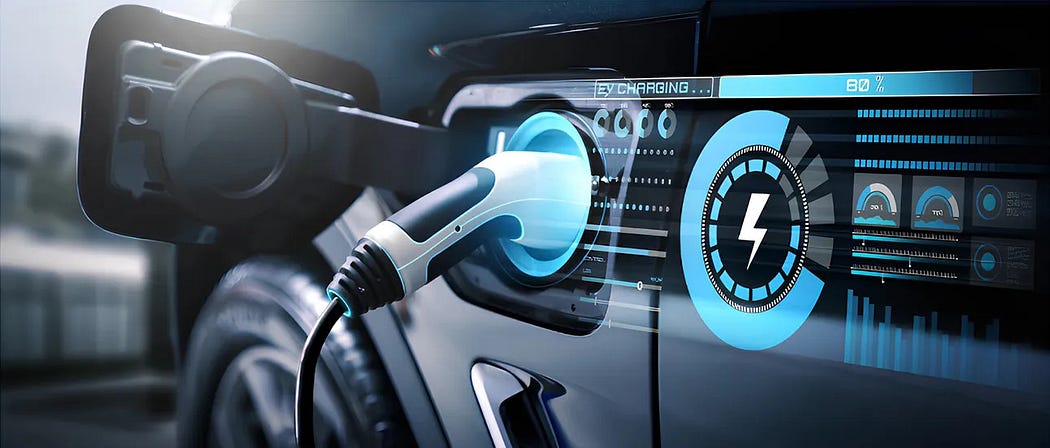Decoding Electric Vehicle Charging: Time, Speed, Types & More

Determining the charging duration for an electric vehicle might seem simple, yet it’s a nuanced equation shaped by multiple variables. The rate of electric vehicle Charging is governed by an amalgamation of factors, encompassing battery size, its condition, charging station capacity, and surrounding environmental factors.
In this complete guide, we delve into the multifaceted aspects of charging an electric vehicle, unraveling the intricacies that contribute to the diverse electric vehicle times ranging from as little as 30 minutes to over 12 hours.
Factors Affecting Electric Vehicle Charging Speed
Understanding the nuances of electric vehicle charging time requires an exploration of the underlying factors that shape this process. Let’s dissect each element to provide a comprehensive understanding of how these components interact to determine the time it takes to charge an electric vehicle.
Battery Size: A Key Player:
The battery size, reflecting the capacity to store and provide energy to the vehicle, plays a pivotal role in electric vehicle charging time. Electric vehicles support batteries of varying sizes; for instance, the Jaguar I Pace boasts a 90 kWh battery, while the Nissan LEAF features a more compact 40 kWh battery.
Logically, a larger battery requires more time to charge compared to a smaller one under identical charging conditions. To illustrate, if both vehicles charge at a 22 kWh point, the I Pace will take approximately 4 hours to reach full capacity, while the LEAF will accomplish the same in just under 2 hours.
A simple formula defines this relationship: Battery size / Charger capacity = Charging time.
Battery Maximum Capacity:
The battery’s maximum capacity dictates the rate at which the vehicle can absorb energy while connected to a charger. Vehicles with higher battery capacities can accumulate more energy per hour, enabling faster charging rates. It’s essential to note that charging at a rate exceeding the vehicle’s maximum capacity is futile, as it will not accelerate the process beyond this limit.
Electric Vehicle Charging Station Types: Differentiating Charging Speeds
Electric vehicle charging stations fall into categories of rapid, fast, and slow chargers, each influencing the charging duration significantly.
Rapid Chargers:
Predominantly located at public electric vehicle charging stations, rapid chargers exhibit remarkable efficiency by replenishing most EVs within 30 minutes to an hour. This category encompasses diverse charging capacities, ranging from 43 kWh to Tesla’s superchargers at an impressive 150 kWh. The initial 80% of battery capacity charges rapidly, while the remaining 20% incurs a slower pace, maintaining a consistent pricing structure per kilowatt.
Fast Chargers:
Popular in public parking lots and homes electric vehicle charging setups, fast chargers enable full charges within 4–6 hours, depending on battery size. With a capacity of 22 or 7 kilowatts per hour and a three-phase electricity supply, fast chargers cater to an array of EVs.
AC vs. DC Fast Charging:
The distinction between AC and DC charging lies in whether power conversion transpires within the vehicle or the charging point. AC charging relies on the vehicle’s onboard charger, while DC charging transforms power externally, expediting the charging process. The proliferation of public DC fast charging infrastructure promises even shorter charging times.
Slow Chargers:
Characterized by a modest output of 3.7 kWh, slow chargers offer the lengthiest charging times. For instance, a battery with a 90 kWh capacity requires approximately 24 hours to reach full charge via a slow charger.
Environmental Factors
Temperature fluctuations affect both the efficiency of charging stations and the EV’s energy consumption. Colder conditions impair the charging process, translating into prolonged charging times. Research on New York City taxis highlighted that a Nissan LEAF charged at 20°C reached 80% capacity in 30 minutes, whereas at 0°C, the battery only attained 44% during the same interval.
Charging Habits
Personal electric vehicle charging preferences and habits also influence charging times. Two approaches are common: top-up charging and overnight charging.
Top-Up Charging:
Ideal for those without a personal home charger, top-up charging involves frequent, shorter charging sessions at public and private charging points. Rapid charging stations facilitate this strategy, offering convenient locations for periodic power boosts.
Overnight Charging:
Home chargers, often rapid electric vehicle charging stations, support overnight charging, requiring approximately 4–6 hours to replenish an EV’s battery while parked. This method capitalizes on the convenience of charging during off-peak hours.
Charging Range Gained:
Ultimately, the charging time results in a quantifiable driving range. Slow chargers provide 15 miles per hour, fast chargers yield 30–90 miles, and rapid chargers offer an impressive 90–200 miles in just 30 minutes.
Charging Station Accessibility and Future Prospects
Another dimension influencing electric vehicle charging time is the accessibility and distribution of charging stations. The availability of charging infrastructure plays a significant role in the overall charging experience, impacting the convenience and efficiency of electric vehicle ownership.
The ease of accessing charging stations can significantly impact an electric vehicle owner’s charging routine. The spread of charging infrastructure, especially in urban centers and along major highways, ensures that EV drivers have convenient options for recharging their vehicles. An extensive network of charging stations reduces the need for detours or extended waiting periods, enhancing the practicality of electric mobility.
Conclusion
In essence, gauging the time required for electric vehicle charging hinges on an intricate interplay of elements. From battery size and station type to environmental conditions and individual charging habits, these factors converge to define the charging experience. As electric mobility continues to advance, a nuanced understanding of these variables empowers EV enthusiasts to navigate their charging choices effectively.


Comments
Post a Comment